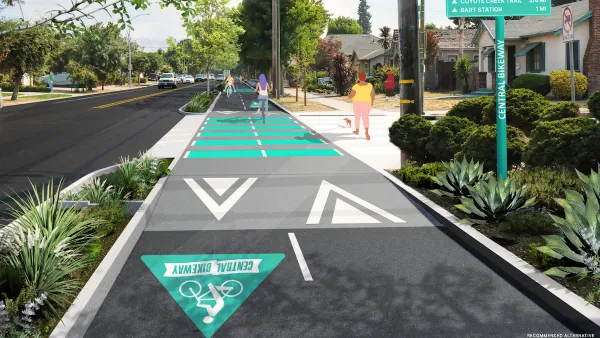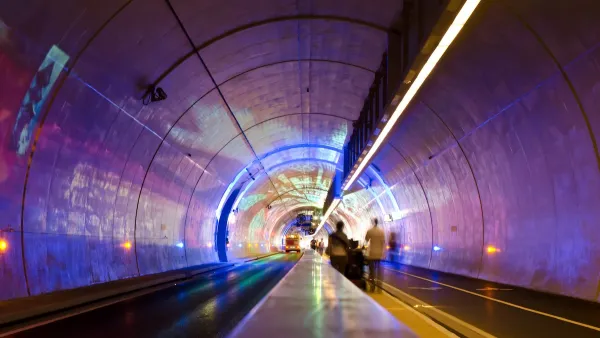The small Los Angeles County city could remove 1.3-miles of protected bike and bus lanes installed during the Covid-19 pandemic.

In an opinion piece in the Los Angeles Times, Yotala Oszkay Febres-Cordero calls on the small city of Culver City, on Los Angeles’ west side, to continue the Move Culver City pilot project, which installed 1.3 miles of protected bike and bus lanes in the city’s downtown.
For Oszkay Febres-Cordero, removing the protected lanes, a move favored by some conservative city council members, would be “a devastating setback, not just for those of us who use the lanes but also for how Angelenos see the future of transportation in our region.”
The op-ed addresses common concerns, such as traffic. “Drivers complain that the bus and bike lanes slow down traffic on the street. But the lanes don’t do so by much: According to the report, during peak afternoon traffic, travel time in a car has increased by a maximum of two minutes compared with a 2019 baseline.”
Protected bus lanes can also address transportation equity. “Many people riding the bus in L.A. County are not doing so on principle or because it’s fun, but because it’s the most viable option for them. A bus lane makes their lives better too.”
Oszkay Febres-Cordero holds city council members responsible for improving transportation for all residents. “Council members are the decision makers. If bus service is not up to par to maximize the protected lane, then it is on them to make it better. If the project lacks support, then they need to invest in the service frequency, reliability and connectivity to strengthen the ridership and thus the buy-in.”
FULL STORY: Opinion: Cars don’t have to rule Culver City, or the future of L.A. transit

Planetizen Federal Action Tracker
A weekly monitor of how Trump’s orders and actions are impacting planners and planning in America.

Chicago’s Ghost Rails
Just beneath the surface of the modern city lie the remnants of its expansive early 20th-century streetcar system.

Amtrak Cutting Jobs, Funding to High-Speed Rail
The agency plans to cut 10 percent of its workforce and has confirmed it will not fund new high-speed rail projects.

Ohio Forces Data Centers to Prepay for Power
Utilities are calling on states to hold data center operators responsible for new energy demands to prevent leaving consumers on the hook for their bills.

MARTA CEO Steps Down Amid Citizenship Concerns
MARTA’s board announced Thursday that its chief, who is from Canada, is resigning due to questions about his immigration status.

Silicon Valley ‘Bike Superhighway’ Awarded $14M State Grant
A Caltrans grant brings the 10-mile Central Bikeway project connecting Santa Clara and East San Jose closer to fruition.
Urban Design for Planners 1: Software Tools
This six-course series explores essential urban design concepts using open source software and equips planners with the tools they need to participate fully in the urban design process.
Planning for Universal Design
Learn the tools for implementing Universal Design in planning regulations.
Caltrans
City of Fort Worth
Mpact (founded as Rail~Volution)
City of Camden Redevelopment Agency
City of Astoria
City of Portland
City of Laramie





























